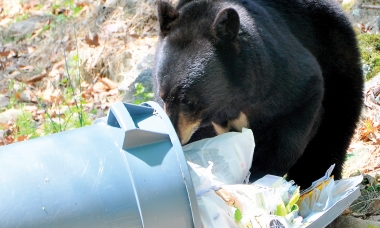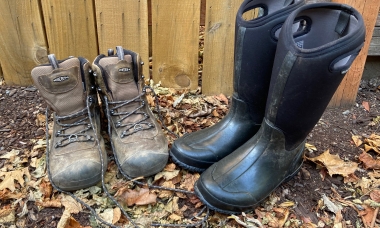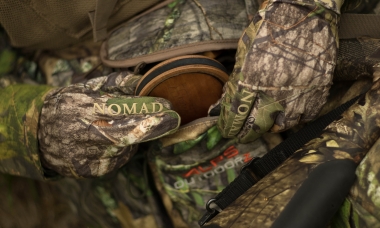
Search myodfw.com

The Minto Fish Facility is part of the Marion Forks/ Minto Fish Facility complex. Minto is located upstream of Packsaddle Park on the North Santiam River. The Minto facility has year round fish collection, acclimation for Chinook salmon and steelhead, a spawning facility, juvenile acclimation, short and long term holding of adult salmonids, water to water transfers for all fish, and out planting and fish recycling capabilities. Minto Dam creates an impassable barrier that encourages migrating fish into the facilities fish ladder. All fish moving upstream are counted, and disposition is determined depending on species and time of the year.
Each fathom line, conservation area, and marine reserve is defined by a connecting series of waypoints (latitude and longitude). The waypoints are used for regulatory enforcement, while maps are provided for visual reference.
ODFW staff in The Dalles contacted the local trash service provider for approval to modify trashcans. Please do not lock your trashcan or service providers may charge a “locked fee.” Use a carabiner instead. Your trashcan must be strong enough for a bear to stand on. Test yours before modification. If it collapses or the lid bends easily, it will not keep a bear out. Materials and Tools • (1) Heavy-duty Trashcan • (16) #10-24 x 3/8" Nuts • (16) 3/8" Washers • (16) #10-24 x 3/8" Machine Screws • (2) Steel Fixed-Eye Hasps (hinged or flat)* • (1) Wrench

It’s hard to enjoy a day of hunting if your feet are cramped, wet or cold. Many turkey hunters in Oregon have at least two different pairs of boots to meet the variety of conditions they might encounter while hunting. Rubber boot for cold, wet conditions Rubber knee boots are a good choice when conditions are cold and wet, and/or when you’ll be sitting for hours in a ground blind. Many boots are insulated to help keep your feet warm. If you’re looking at uninsulated boots, buy them ½ to one size larger than you normally wear. This will give

You’ll need a way to carry your shells, turkey calls, first aid kit, extra gloves, lunch, water and other gear into the field. The most popular choices are a daypack or a specialized turkey hunting vest. Daypacks are simple and affordable A daypack is a simple and affordable option. It will hold a lot of stuff, most have some pockets to help you organize your gear, and some are hydration bladder compatible to help you stay hydrated during hot, dry hunts. Keep these things in mind when packing a daypack: Make sure the things in your daypack are secure and

New pilot program for limited entry parking at Sauvie Island Beaches Free pass required summer weekends and holidays starting July 4
SAUVIE ISLAND WILDIFE AREA, Ore.— To manage ongoing traffic and parking problems at Sauvie Island Wildlife Area's beaches, ODFW is introducing a new limited-entry parking pilot program. Starting July 4, vehicles will need a free Sauvie Island Beaches Pass in addition to the Wildlife Area Parking…
Recreational fishing days for adult hatchery Chinook and sockeye added for Columbia River mainstem
CLACKAMAS, Ore.— Fishery managers from Oregon and Washington added recreational fishing days for adult hatchery Chinook and sockeye to the on-going hatchery steelhead and hatchery jack Chinook fishery in the mainstem Columbia River downstream of the Highway 395 Bridge at Pasco, WA during a joint…

ODFW seeks applicants for Fish Screening and Fish Passage Task Forces - apply by August 31
SALEM, Ore. — ODFW is seeking applicants to serve on two public advisory committees that support its Fish Screening and Fish Passage Programs. These programs play a vital role in protecting native fish populations across the state. Through collaboration with landowners, agencies, and conservation…
Commission adopts limited Umpqua River fall Chinook season
PENDLETON, Ore. ‐ The Fish and Wildlife Commission adopted a limited fall Chinook fishing and retention season on the mainstem Umpqua, Smith, and North Fork Smith rivers after receiving many public comments and hearing testimony from a Douglas County Commissioner, business owners and local anglers…
Commission meets June 12-13 in Pendleton
SALEM Ore. – The Fish and Wildlife Commission meets June 12-13 for a field tour on Thursday and a regular meeting Friday. See the agenda here. The meeting will also be livestreamed from the Commission page. To testify on an agenda item virtually, register on the agenda page at least 48 hours in…
Chance to comment on proposed 2026 Sport Fishing Regulations
SALEM, Ore.—ODFW will be proposing several changes to next year's Sport Fishing Regulations. The Commission will adopt 2026 regulations at their Sept. 12 meeting in Ontario. Major staff proposals for changes include: Allowing spearfishing for bass and walleye in more rivers and streams: Spearfishing…

Columbia River subarea all-depth opens to halibut angling beginning Aug. 17
NEWPORT, Ore – Pacific halibut angling opens Aug. 17, Sundays through Friday through Sept. 30 or until quota is reached in the Columbia River subarea (Leadbetter Pt., WA to Cape Falcon, OR) all-depth fishery. The daily bag limit is one Pacific halibut. The Columbia River subarea received a 5,000…

Commission meets Sept. 11-12 in Ontario to consider 2026 big game hunting and sport fishing regulations
SALEM, Ore.–The Fish and Wildlife Commission meets Sept. 11 and 12 in Ontario for a field tour on Thursday and a regular meeting on Friday. See agenda here. The meeting will also be livestreamed from the Commission page. To testify on an agenda item virtually, register on the agenda page at least 48…

Additional days for Columbia River salmon fishery announced
CLACKAMAS, Ore. – Fishery managers from Oregon and Washington added more recreational salmon fishing days in the mainstem Columbia River during a joint-state hearing today. The decision came after fishery managers assessed Chinook harvest in the fall season fisheries and considered the current in…
